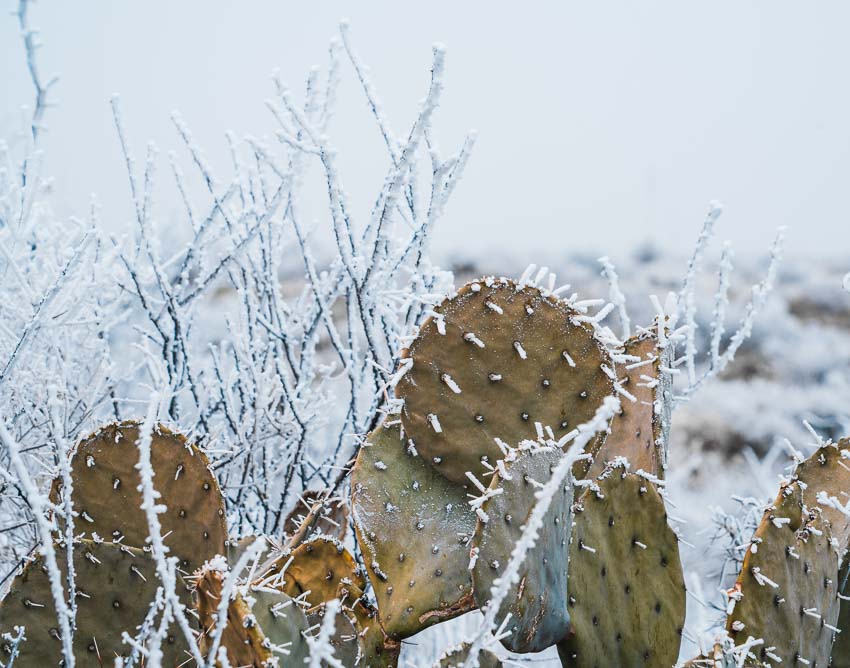From scorching hot days to cold desert nights, gardening in the Southwest presents unique challenges. Learning how to protect plants from frost is a critical skill for winter gardening in a desert-like climate.
How Plants Fare During Winter in Deserts
Whether growing a vegetable or flower garden, you must take a strategic approach to gardening in the Southwest.
The Southwest has two main growing seasons. You can start planting cool-weather crops in December and January, but you grow most warm-weather crops like tomatoes, corn, and squash outdoors from mid-February to the end of May.
The second growing season in Southwest desert climates is mid-September to early December. Once temperatures drop below 100°F (38°C) in the fall, it’s time to start growing cool-weather vegetables. These include broccoli, cauliflower, peas, and spinach.
Why Protecting Plants from Desert Frost Is Important
Since both of these Southwest growing seasons coincide with winter months, your plants are at risk. You need to protect them from frost on cold nights. If temperatures dip below 32°F (0°C), your plants may die. Therefore, you must have some way to protect them from freezing.
At a cellular level, when water freezes and expands inside plant cells, it causes them to burst. When they thaw out, they are damaged. Some plants are more cold-tolerant, but most annuals won’t survive temperatures below 20°F (7°C).
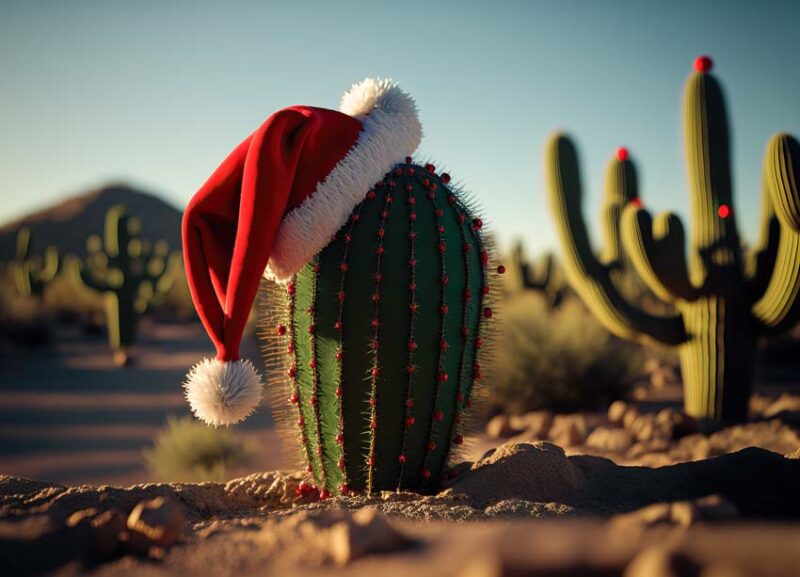
Many desert succulents and cacti are less prone to freezing because their cells expand and contract.
Ecological Significance
Whether you’re growing Southwest native plants or tender plants like begonias, there are important ecological reasons to protect your garden from frost.
Unseasonably cold temperatures can disrupt the ecosystem in your area, causing problems for local wildlife and insect populations. Frost-damaged plants can also disrupt pollination cycles, impacting the delicate balance of biodiversity in your area.
Aesthetic Value
Many gardeners grow plants purely for aesthetic value, and an unexpected cold snap can destroy months of hard work. Frost damage destroys the beauty of ornamental plants, and it may take several weeks or months for them to recover.
Outdoor potted plants in the Southwest are common and more susceptible to freezing than plants grown in the ground. As such, they require more protection.
Economic Reasons
Farmers, professional market gardeners, and family garden enthusiasts count on their gardens for economic reasons. Also, replacing plants damaged by frost is expensive.
When to Start Protecting Plants from Desert Frost
It can be difficult to know when to start protecting plants, no matter what climate region you’re in. Getting to know the local climate patterns, hardiness zones, and temperature variations in your area will help you get better at gauging when you need to cover cold desert plants.
Understanding Local Climate Patterns
Your local climate system depends on factors like elevation, latitude, topography, and microclimates. Factors like how much sunlight you receive and how close you are to major water sources can have significant impacts.
Hardiness Zones
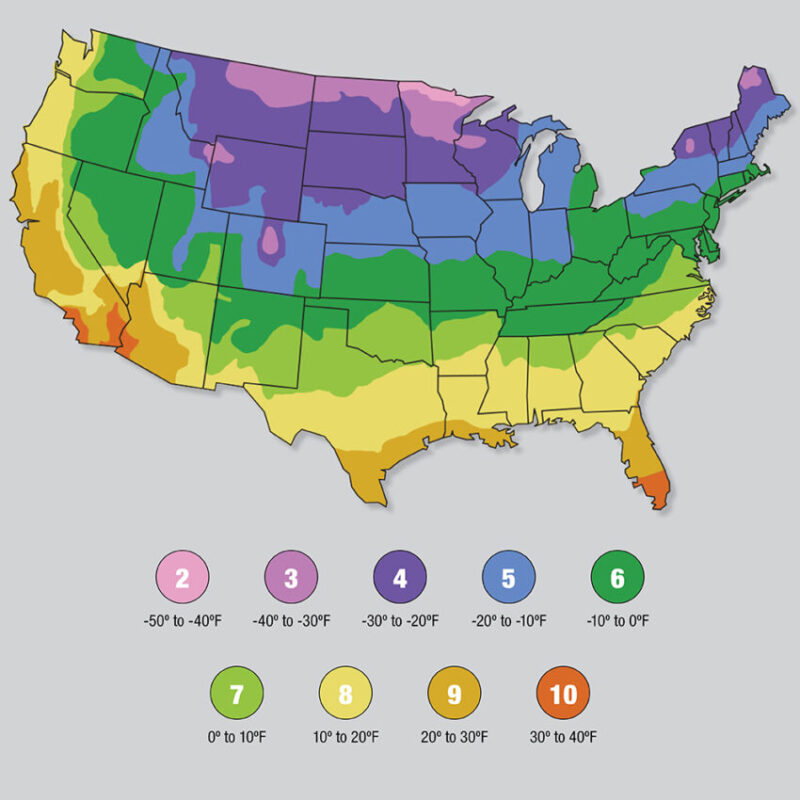
The USDA Hardiness Zones help gardeners know which plants will grow in their region and inform them about expected frost dates.
Most of the Southwest falls in Hardiness Zones 7 to 9, but you may live in a sheltered microclimate that’s a little warmer. Higher elevations can be a little cooler.
Temperature Variations
One of the biggest challenges of growing a garden in the Southwest is the temperature changes. The swing in temperatures from cold desert nights to daytime highs around 70°F (21°C) can be as much as 50 or 60 degrees.
It’s also important to note that climate change affects temperatures in many US regions. The USDA recently updated the Hardiness Zone Map to reflect the temperature increase in the last decade.
Factors Influencing Frost Onset
Several factors influence the onset of frost in your region. Every growing season is different, and it helps to pay attention to cues from nature that let you know weather patterns are changing. Watch the plants and local wildlife to see what hints they can provide about seasonal weather shifts.
Temperature Thresholds
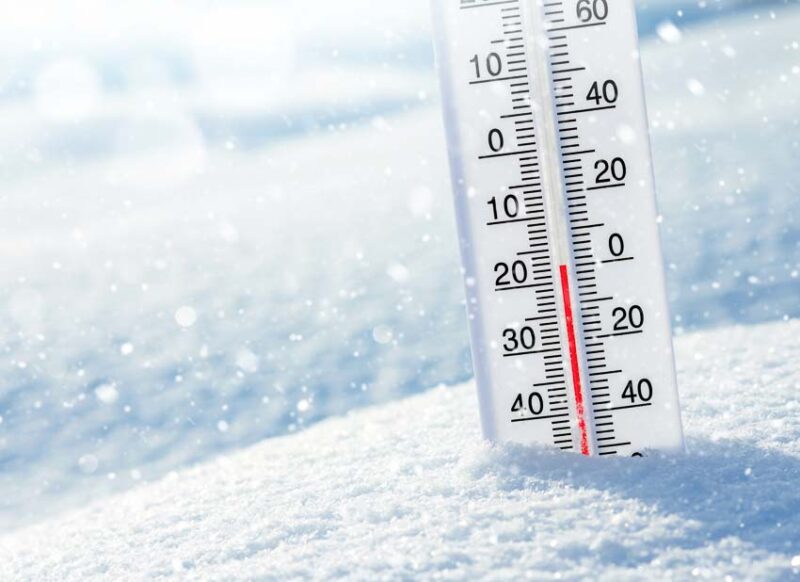
It’s easier to time frost in your region when you learn the difference between a light frost and a freeze.
- Light frost–when air temperatures drop to 32 to 36°F (0 to 2°C), light frost crystals may form on exposed surfaces. Light frosts may last just a few minutes and don’t usually cause much harm to plants.
- Hard freeze–when the air temperature is 32°F (0°C) for four hours or more. The interior temperature of plants can fall below freezing, causing damage to plant tissue.
Dewpoint
Another key factor to understand is dewpoint. As the night air temperature drops, the cold air can’t hold as much water vapor as warm air, and condensation forms. The temperature at which condensation takes place is called the dew point.
The more moisture in the air, the higher the dew point, and the colder the air temperature must be to freeze your plants. Generally, if the dewpoint is about 45°F, you don’t need to worry about frost.
Radiational Cooling
Clear skies and calm conditions promote radiational cooling in the Southwest desert regions. When this happens, the Earth’s surface loses heat rapidly to the atmosphere, causing temperatures to plummet.
Weather Fronts
Warm and cold air fronts that move through the Southwest can bring cooler or warmer weather, influencing the onset of frost.
Depending on where you live, your region may be affected by cooler polar-front jet streams from the north or tropical jet streams from the south.
Topographical Effects
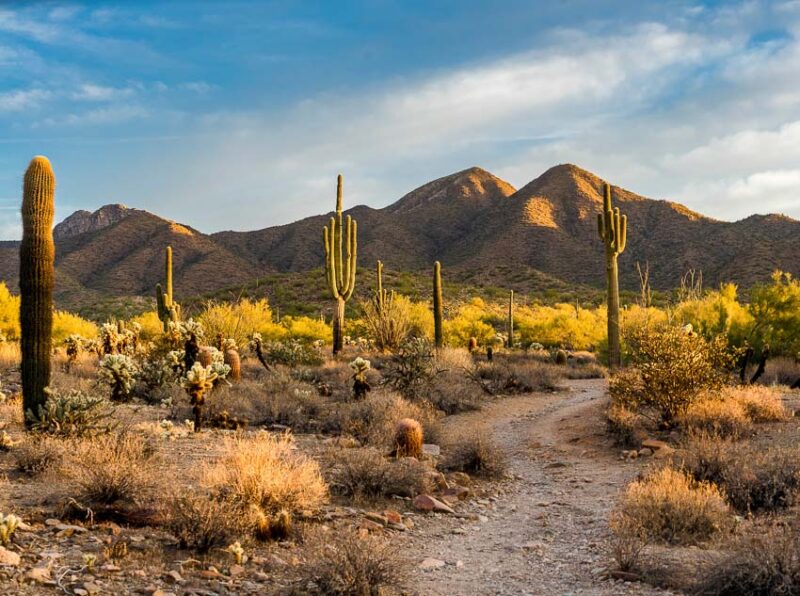
Many parts of the Southwest are mountainous regions, and this type of terrain can be affected by prevailing winds that create upslope flow. The rising motion of the upslope flow cools the air and brings freezing temperatures, especially on the windward side of the mountains.
Early Preparation Is Key
Early preparation is the key to protecting cold desert plants from unexpected frost. Having all of the supplies you need and keeping your eye on local weather reports ensures that you can take action when frost is predicted in the forecast.
Monitoring Local Weather
Stay vigilant about monitoring local weather alerts and frost advisories. Weather conditions can change rapidly, and advanced notice allows you to take timely action. To stay informed, utilize weather apps, local news channels, or online resources.
Seasonal Timing
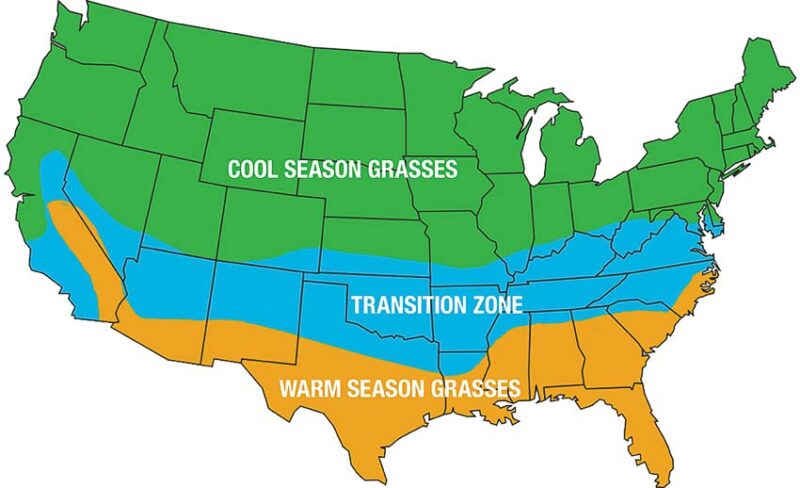
No matter where you are, knowing the first and last expected frost dates for your region is crucial to gardening. One good resource for accurate regional data is your local extension office. They can help you learn more about seasonal timing in your area so you can make the most of your gardening efforts.
Gradual Transition
The seasons change gradually in the Southwest, giving you time to gather your frost protection supplies when frosts are imminent. Pull them out of storage well before the cold temperatures threaten to cause damage.
Tips for Protecting Plants from Frost
The essence of gardening is creating ideal conditions for plants, and while this presents challenges in the Southwest, there are many strategies to use for successful gardening.
Selecting Frost-Resistant Plants
The first step is selecting plants for your Hardiness Zone. Annuals and tender perennials are generally classified into three groups:
- Tender-extremely sensitive to cold temperatures, like begonias and impatiens.
- Half-hardy–prefers warmer temperatures and must be protected from frost, like cosmos, tomatoes, and peppers.
- Hardy–can withstand light frosts, such as cactus, succulents, sweet alyssum, carrots, and spinach
Understanding the frost tolerance of your plants will make it easier for you to prioritize which ones need to be covered to protect them. Some hardy annuals, like kale and chard, can withstand temperatures as low as 20°F (7°C) and may not require cold protection in your growing zone.
Don’t miss our guide on How to Care for Succulents!
Creating Microclimates
You can create microclimates in your yard that allow you to grow plants that aren’t typically hardy enough for the Southwest winters. To create a microclimate, utilize south-facing walls or fences, create windbreaks, install ponds, and add thermal mass, such as rocks, concrete, or brick, to your garden.
Strategic Planting
Planting your garden strategically involves using methods to take advantage of environmental factors like sunlight, slopes, and wind.
For example, cold air settles, and hot air rises, so you should avoid planting frost-sensitive plants in the low-lying areas of your yard. Also, place tender ornamentals like bougainvillea and lantana near a concrete wall.
Mulching and Watering Practices
Prepare to protect your desert plants from frost with mulch. A thick layer of mulch around the base of your plants will retain a lot of heat, making your garden less susceptible to light freezes.
Mulch also helps soil retain water. Water is an excellent thermal conductor, and since moist soil tends to stay warmer than dry soil, one strategy is to soak your ground if the forecast calls for freezing temperatures.
Protective Covers and DIY Solutions
You don’t have to spend a lot of money on protective covers. If you have old blankets, tarps, or drop cloths, those will work just as well as store-bought covers. Here are the best protective covers and DIY solutions to protect desert plants from unexpected frost.
Frost Blankets
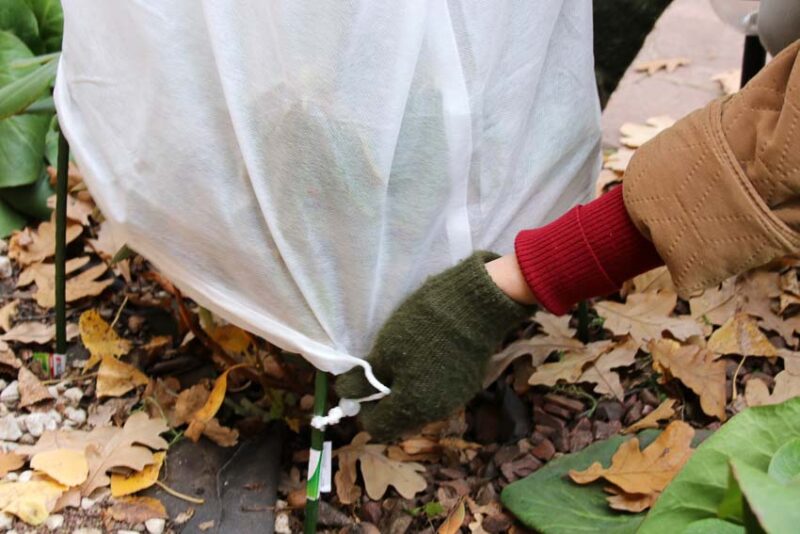
Commercial frost blankets and row covers are an excellent solution for protecting plants from frost, especially if you have a large family or market garden.
Burlap and Old Bedsheets
Draping old burlap sacks or bedsheets over your plants will help keep them above freezing as they draw upon the warmth of the soil. Use any cloth materials, but avoid plastic because it doesn’t insulate.
Creating Windbreaks
Windbreaks are a great way to create a microclimate in your yard, and they serve several purposes related to frost protection:
- Prevent heat loss
- Reduce the wind chill effect on plants
- Trap warm air near the ground
- Help retain humidity
Insulating Potted Plants
The best potted plants for Southwest winters include pansies, succulents, cacti, and ornamental cabbages. To insulate container plants, add a layer of straw mulch or sawdust. In Zone 7, it can get cold enough to damage the roots of potted plants, so it helps to wrap the entire pot in burlap or old blankets.
5 FAQs About Protecting Plants from Desert Frost in the American Southwest
What temperature do you need to cover plants in the desert?
It can be hard to tell when it will freeze, especially in the desert, where temperatures can plummet drastically overnight. Get ready to protect your plants from frost once temperatures drop below 40°F (4°C).
Can I cover my plants with plastic bags to protect them from desert frost?
Most horticulturists recommend covering your plants with plastic to protect them from frost. Plastic transfers both cold and heat remarkably well, and unlike cloth, it doesn’t insulate. Old blankets, curtains, sheets, trash bags, and tarps work best.
What are the best flowers to grow in the Southwest during winter?
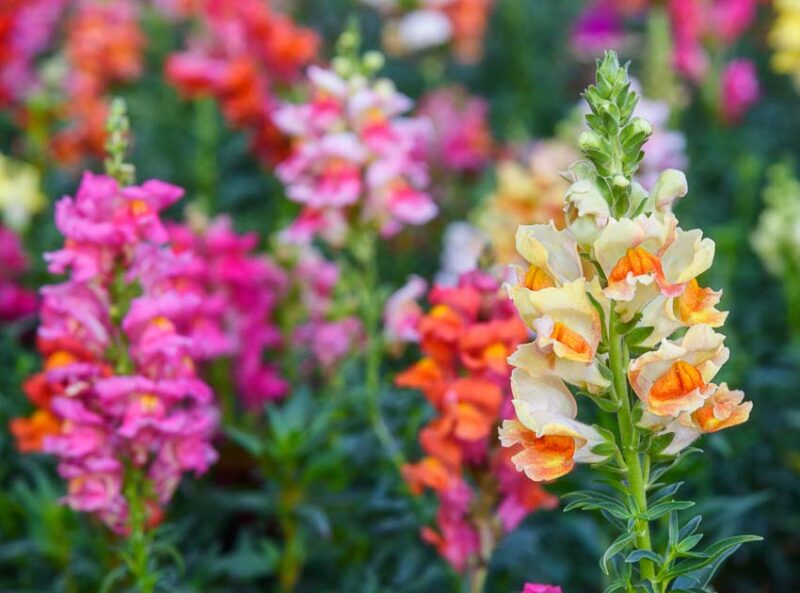
Many flowers will grow well during the winter in the Southwest. The best winter flowers for the Southwest include pansies, snapdragons, lantana, chrysanthemums, and petunias. Some of them are annuals, but many are perennials grown as annuals, and if you protect them, you can keep them alive for a long time.
How do I protect bougainvillea from frost?
Bougainvillea is a popular ornamental in the Southwest but isn’t frost-hardy. When the weather dips below 40°F (4°C), be ready to drape frost blankets over these tender shrubs.
How do I protect cactus plants from desert frost damage?
Your cactus and succulent plants can survive freezing temperatures, but if it gets too cold, it can damage the tips, especially with columnar cacti. While many plants survive frost better if your ground is moist, cacti do better with dry soil.
Cover cacti with blankets if temperatures are expected to drop below 20°F (7°C), taking care not to remove their spines when you uncover them. Cactus freeze damage will first appear white, then turn black after the tissues decay.
What to plant in December in the American Southwest?
December and January are a great time to plant seeds indoors in the Southwest so they’ll be ready to plant outside when the temperatures warm up. Depending on your local climate and growing zone, you may be able to plant some cold-weather crops outdoors, such as carrots, peas, radishes, and broccoli in December.

